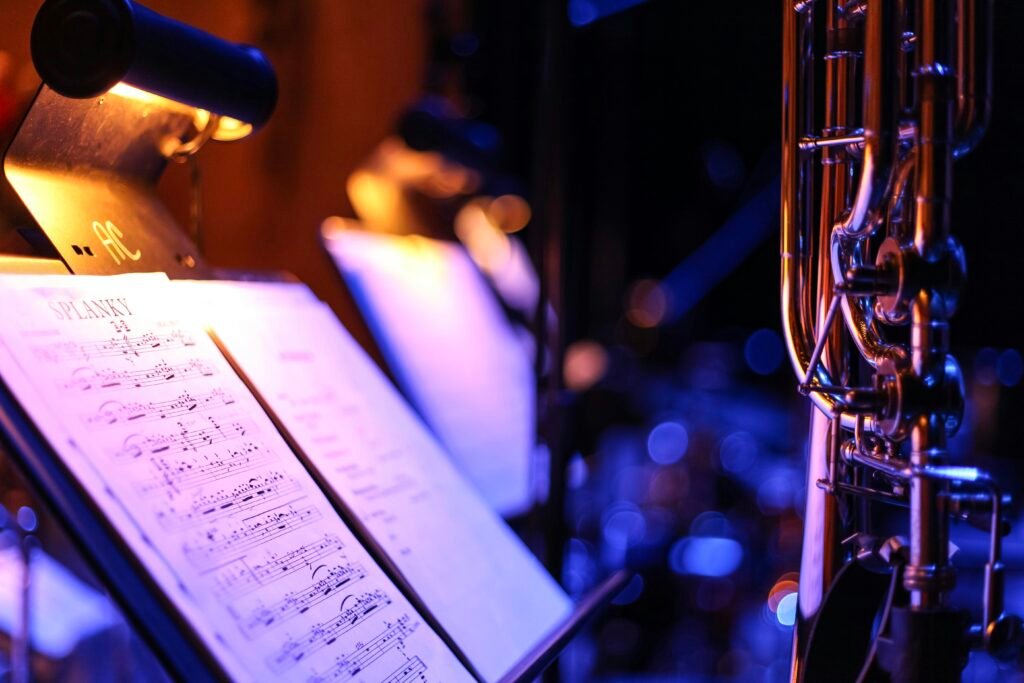Are you a music enthusiast looking to delve into the world of jazz chords and progressions? If so, you may find yourself wondering what the best approach is to learn these complex and mesmerizing musical elements. In this article, we will explore various methods and techniques that can help you master jazz chords and progressions, showcasing the versatility and beauty of this genre. Whether you’re a beginner or an experienced musician, there’s something for everyone to take away and enhance their jazz repertoire. So, grab your instrument and get ready to embark on an exciting musical journey!
Understanding Jazz Chords and Progressions
What are Jazz Chords?
Jazz chords are unique chord voicings that are commonly used in jazz music. They often contain extended notes beyond the basic triads found in traditional music. Jazz chords are known for their complex and rich sound, adding color and depth to the music. They often include notes such as the 9th, 11th, and 13th, creating a lush and harmonically sophisticated sound.
What are Jazz Progressions?
Jazz progressions refer to the series of chords that are played in a specific order to create the harmonic structure of a jazz composition or improvisation. These progressions often follow specific patterns or chord changes that are characteristic of the jazz genre. Jazz progressions can range from simple to complex, depending on the style and complexity of the piece.
Why Should You Learn Jazz Chords and Progressions?
Learning jazz chords and progressions can greatly enhance your understanding and appreciation of jazz music. It allows you to explore the harmonic possibilities within jazz compositions, giving you the tools to create your own arrangements and improvisations. By learning jazz chords and progressions, you can express yourself more creatively and authentically within the jazz genre.
Benefits of Learning Jazz Chords and Progressions
There are several benefits to learning jazz chords and progressions. Firstly, it expands your musical vocabulary and knowledge of music theory. Jazz chords often utilize extended and altered notes, which can deepen your understanding of harmonic relationships. Secondly, learning jazz chords and progressions improves your improvisation skills, as it gives you a solid foundation to build melodic lines upon. Additionally, it enhances your ear training abilities, allowing you to recognize and appreciate the harmonic complexities present in jazz music.
Getting Started with Jazz Chords
Basic Music Theory
Before diving into jazz chords, it is important to have a basic understanding of music theory. This includes knowing the major and minor scales, as well as understanding intervals and basic chord construction. This foundation will greatly assist in learning and applying jazz chords and progressions.
Learning Major and Minor Chords
Start by learning and practicing major and minor chords. These chords form the basis of most jazz progressions, and mastering them is essential for a solid understanding of jazz harmony. Practice these chords in different inversions and voicings to expand your chord vocabulary and increase your ability to navigate the keyboard or fretboard.
Understanding Seventh Chords
Seventh chords are another essential component of jazz harmony. In addition to the basic major and minor seventh chords, there are also dominant seventh, diminished seventh, and half-diminished seventh chords commonly used in jazz. Understanding the construction and function of these chords is crucial for creating the authentic sound of jazz.

Exploring Jazz Progressions
Common Jazz Progressions
There are several common jazz progressions that every aspiring jazz musician should be familiar with. These progressions include the ii-V-I progression, the blues progression, and the rhythm changes progression. By memorizing and practicing these progressions in different keys, you will develop a strong foundation for improvisation and understanding the structure of jazz compositions.
Understanding Chord Functions
In jazz, each chord within a progression has a specific function. These functions include tonic, subdominant, and dominant. By understanding the function of each chord, you can anticipate the harmonic movement and make informed melodic choices. Analyzing and studying the chord functions within jazz progressions will greatly enhance your understanding and ability to navigate through complex jazz harmony.
Analyzing Jazz Standards
Studying and analyzing jazz standards is a great way to deepen your understanding of jazz progressions. By listening to and transcribing recordings of jazz standards, you can learn how different composers and musicians utilize chords and progressions to create their unique sounds. Analyzing the harmony, melody, and structure of jazz standards will provide valuable insight into the inner workings of jazz compositions.
Developing Jazz Chord Vocabulary
Learning Extended and Altered Chords
Once you have a solid understanding of basic jazz chords, it is time to expand your vocabulary by learning extended and altered chords. These chords add further complexity and richness to your playing, allowing you to create unique and interesting sounds. Practice these chords in different voicings and inversions to add variety and depth to your chord progressions.
Exploring Voicings and Inversions
Voicings and inversions refer to the different ways chords can be played on the keyboard or fretboard. By exploring different voicings and inversions, you can find the most comfortable and effective way to play a chord. This allows for greater flexibility and creativity in your playing, as you can choose voicings that best suit the context and sound you want to achieve.
Studying Rootless and Drop 2 Voicings
Rootless voicings and drop 2 voicings are commonly used in jazz piano and guitar playing. Rootless voicings omit the root note of the chord and instead emphasize other important chord tones. This creates a more open and harmonically interesting sound. Drop 2 voicings involve taking the second highest note of a four-note chord and dropping it down one octave. This creates a unique and rich sound that is often used in jazz arrangements.

Mastering Jazz Chord Substitutions
Understanding Tritone Substitution
Tritone substitution is a common chord substitution technique used in jazz. It involves replacing a dominant seventh chord with another dominant seventh chord whose root is a tritone away. This creates an interesting harmonic tension and can add variety and complexity to your playing. Understanding and practicing tritone substitution can greatly enhance your ability to navigate through jazz progressions.
Applying Secondary Dominants
Secondary dominants are another chord substitution technique used in jazz. They involve temporarily treating a non-tonic chord as a dominant chord by preceding it with its own dominant chord. This creates a sense of tension and resolution, adding color and interest to your chord progressions. By incorporating secondary dominants into your playing, you can create more dynamic and engaging improvisations.
Exploring Modal Interchange
Modal interchange involves borrowing chords from a parallel key or mode. This technique allows you to introduce unexpected and unique chord changes into your progressions. By utilizing modal interchange, you can create a greater sense of tension, release, and harmonic interest in your playing. Experimenting with borrowed chords from different modes will expand your harmonic palette and add depth to your compositions.
Improvising with Jazz Chords and Progressions
Understanding Jazz Improvisation
Jazz improvisation is a core element of the genre. Improvising with jazz chords and progressions involves creating melodic lines on the spot, using the harmonies as a framework. To improvise effectively, it is important to have a solid understanding of jazz chords and progressions, as well as scales and modes that fit over them. With practice and experience, improvising becomes more intuitive and spontaneous.
Applying Chords in Context
When improvising with jazz chords and progressions, it is crucial to understand how the chords function within the context of the composition. This involves listening to the chords being played and making melodic choices that complement the harmony. By emphasizing chord tones and using passing tones, you can create melodic lines that are both harmonically interesting and musically satisfying.
Developing Melodic Lines with Chords
Developing melodic lines with jazz chords and progressions allows you to create interesting and engaging solos. By arpeggiating the chords, outlining their harmonic movement, and adding passing tones, you can create melodic lines that flow seamlessly over the changes. Experiment with different rhythms, note choices, and techniques to discover your unique improvisational voice.

Practicing Jazz Chords and Progressions
Playing Standards
Playing jazz standards is an excellent way to practice jazz chords and progressions. Standards are well-known and widely-played compositions that have become part of the jazz repertoire. By learning and playing these tunes, you can apply your knowledge of jazz chords and progressions in a musical context. Start with simple standards and gradually work your way up to more complex compositions.
Transcribing Jazz Solos
Transcribing jazz solos is a valuable practice tool for learning jazz chords and progressions. By transcribing solos by your favorite jazz musicians, you can gain insight into how they harmonically navigate through progressions and apply chords in their improvisations. Transcribing solos also improves your ear training and allows you to internalize the language and phrasing of jazz.
Jamming with Others
Jamming with other musicians is an essential part of learning and practicing jazz chords and progressions. By playing with other musicians, you can apply your knowledge in a collaborative and improvisational setting. This helps develop your ability to react and interact with other musicians, further enhancing your understanding and proficiency in jazz.
Utilizing Resources for Learning Jazz Chords and Progressions
Taking Lessons with a Jazz Instructor
Taking lessons with a jazz instructor is a fantastic way to accelerate your learning of jazz chords and progressions. A knowledgeable and experienced instructor can provide guidance, feedback, and personalized instruction tailored to your specific needs and goals. They can offer valuable insights, techniques, and resources to help you progress and improve in your jazz playing.
Using Online Tutorials and Courses
Online tutorials and courses are a convenient and accessible resource for learning jazz chords and progressions. There are many websites and platforms that offer video lessons, written tutorials, and interactive courses specifically designed for jazz musicians. These resources allow you to learn at your own pace and explore different topics and techniques in depth.
Exploring Jazz Publications and Books
Jazz publications and books are another valuable resource for learning jazz chords and progressions. There are numerous books available that cover a wide range of topics, from basic theory to advanced improvisation techniques. These resources often include exercises, examples, and transcriptions that can support and enhance your learning journey.
Building a Repertoire of Jazz Chords and Progressions
Learning Jazz Standards
Building a repertoire of jazz chords and progressions involves learning and practicing a variety of jazz standards. Start by selecting a few standards that you enjoy and are comfortable with, and gradually add more tunes to your repertoire over time. By regularly playing and exploring these compositions, you can deepen your understanding of jazz harmony and develop your own unique interpretations.
Analyzing and Studying Jazz Recordings
Analyzing and studying jazz recordings is a valuable practice for building your repertoire of jazz chords and progressions. By listening to and transcribing recordings by jazz legends, you can learn how they approach chords, progressions, and improvisation. Analyzing the harmony and structure of these recordings will provide valuable insight into the music and help you develop your own musical voice.
Creating Your Own Chord Progressions
Once you have a solid foundation in jazz chords and progressions, try experimenting and creating your own chord progressions. This allows you to explore your musical creativity and develop your unique style. Start by using the knowledge you have gained from studying jazz standards and recordings, and gradually branch out to create your own original compositions and arrangements.
Conclusion
Learning jazz chords and progressions is an ongoing journey that requires dedication, practice, and a love for the music. By understanding the fundamentals of jazz chords and progressions, exploring different voicings and techniques, and actively applying them in improvisation and composition, you can develop your skills and create your own unique sound within the vibrant world of jazz. Regular practice, combined with a passion for the style and essence of jazz, will ensure continued growth and enjoyment in your journey as a jazz musician.

Jonse Becker, a seasoned guitarist and music aficionado, founded his blog to share his passion for all things guitar. With over 20 years of experience, Jonse expertly navigates the realms of vintage acoustics and modern electrics, offering readers a rich blend of technical knowledge, history, and industry trends.

